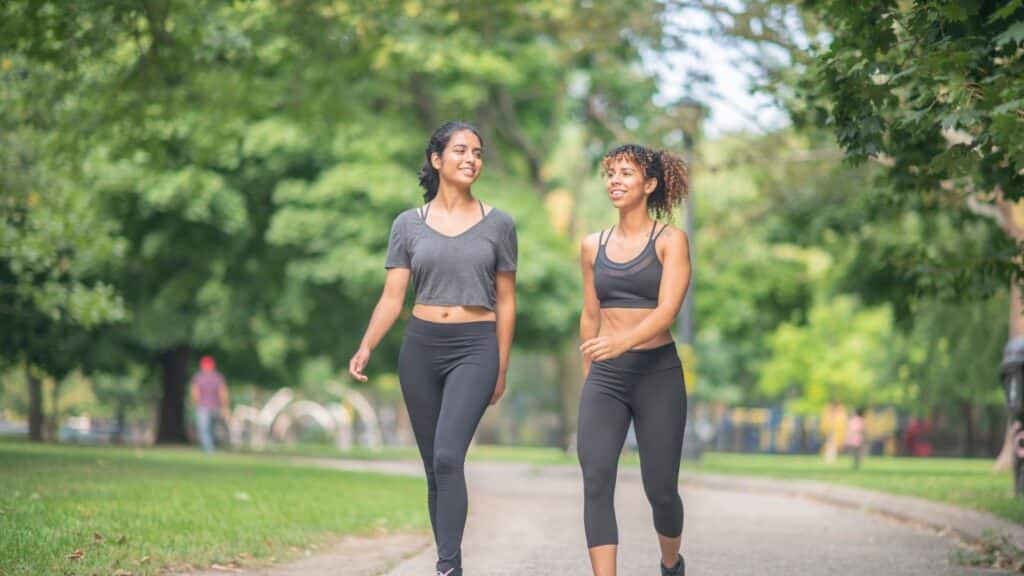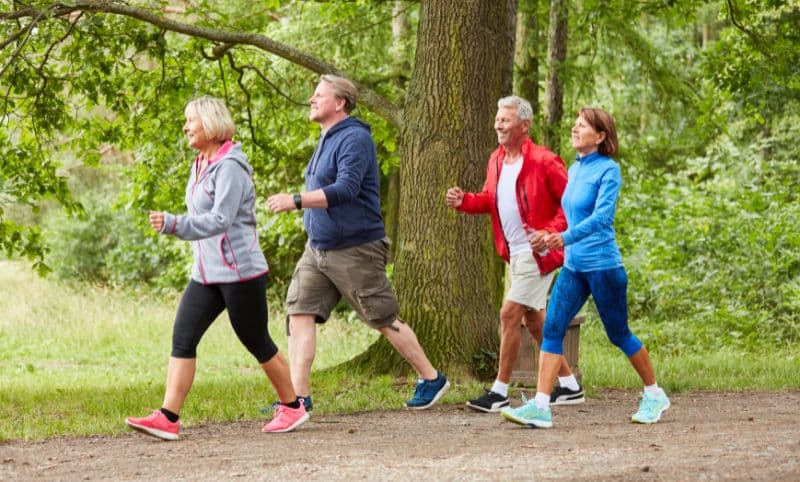When you think about walking or even just taking a walk, it’s honestly not something you give too much thought to, right?
Walking is just one of those things that we do like second nature, because it is second nature to us.
That’s why I was so surprised to see experts saying that we’re doing it all wrong.
Yup, you read that right – everyone is walking wrong.
Here’s the thing – we all know that need to get in more walking, but we never stop to think about HOW we are doing that walking.
And most of us, apparently, don’t have the best habits when it comes to walking the right way.
But sports scientist Joanna Hall counts four common walking mistakes that we all make.
The good news is that we can fix this problem.

1. Focus on walking out of your space.
Hall wants to reform your walk from the ground up, and that means starting with your feet.
She says people “walk into their space”, becoming overly reliant on their hip flexors (the muscles responsible for bringing your knee towards your chest) when walking, without properly engaging their glutes and hamstrings.
“If we are too dependent on the hip flexors, it stops us using our glutes properly,” Hall explains. “Combine that with our lifestyles and the amount we sit down, and the hip flexors gets very short.”
“If an individual goes for a walk, they can often finish the walk feeling discomfort in the lower back, or they can have tracking problems in their knees. That’s because they’re stepping forward into the space [in front of them] and negating the posterior chain [the muscles that run down the back of the body, including the glutes and hamstrings].”

Instead, she recommends “walking out of your space”. You’ll notice that this is a tricky distinction to make, so Hall offers a way of visualizing the difference.
Imagine there are post-it notes with messages written on them stuck to the soles of your shoes. As you walk, try to step forward out of the space you’re occupying like the picture above, leaving your back foot behind you for a fraction longer, so someone standing behind you could quickly read the post-it note.
“What that will do is start to utilize your glutes and your hamstrings, and it will also switch off your hip flexors, which is going to safeguard your back and improve your posture,” Hall explains.
2. Keep the focus on your feet.
The next stop on this walking tour is the hips. Although, again, this second tip stems from how you’re using your feet.
“People tend to walk with a flat foot, which is called a passive foot,” says Hall. “When we step forward into our space, the foot comes down as one unit, but the foot has 26 bones in it.
“Where we have a bone, it’s there because it’s actually a joint, and we’re meant to have movement in it. But as a consequence of walking with a flat foot, we don’t use the foot like that.”

Hall says walking with a flat foot can put more pressure on the knees, with potential knock-on effects to the way your knees track over your toes. Happily, there’s a cost-free fix you can try.
“The way to fix it is to imagine you have pieces of velcro on the bottom of your feet and on the path you’re walking on,” explains Hall.
“When you’re showing the post-it note to the person behind you, imagine you’re peeling that back foot off the floor bit by bit, and that will stimulate movement through the joints of the whole foot. That’s great for your posture, and it’s great for your alignment.”
3. Pay attention to head and shoulders placement while walking.
Do you lean forward when you walk? Maybe you’re engrossed in your phone, or you hunch and stoop forward out of habit. Either way, Hall is telling you to stop.
“Walking with the head leaning forward puts a lot of pressure on the back and makes it very stiff,” she says.
“The back should be able to do four movements; flexion, extension, rotation at the thoracic [mid-] spine and also lateral movement. But when we’re stiff in the shoulders because we’re jutting forward with the head, the back loses rotational movement.”

This impacts your posture, as well as affecting your breath by limiting movement of the diaphragm, Hall says.
“When the spine is stiff, the shoulder girdle actually starts to fall forward… This means you don’t get the opening of the shoulder when you walk, and that has implications on how the diaphragm works. It should move about 10cm with every breath, but it can only move about 4cm.”
To counter this, imagine there’s a straight line between your shoulders and ear lobes. Then, as you walk, keep your shoulders back and your head up to create as much distance between the two as you can – no slouching.
4. Arms are meant to swing while walking.
I think you’ll be happy to hear this that this tip is easily the easiest of Hall’s four tips to put into practice.
“You just want to feel like the arms have a natural swing. You’re not trying to swing them, mechanically there should just be a smooth flow,” explains Hall.

That means no stiff arms, no holding up a phone while you walk, or anything like that.
Just natural free-flowing movement from your arms as they naturally swing to keep rhythm with your pace.
So, keep these tips in mind the next time you’re out trying to get in those 10,000 steps!
